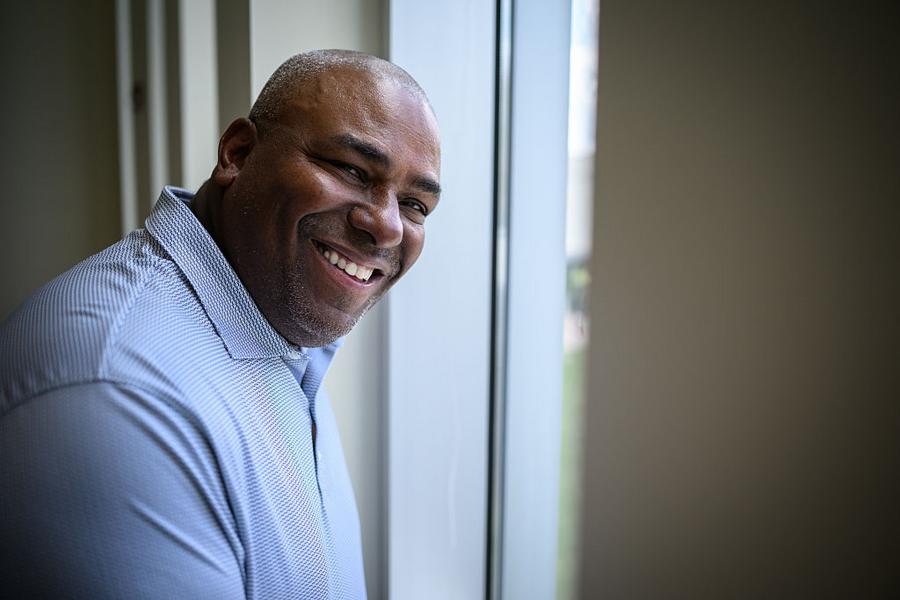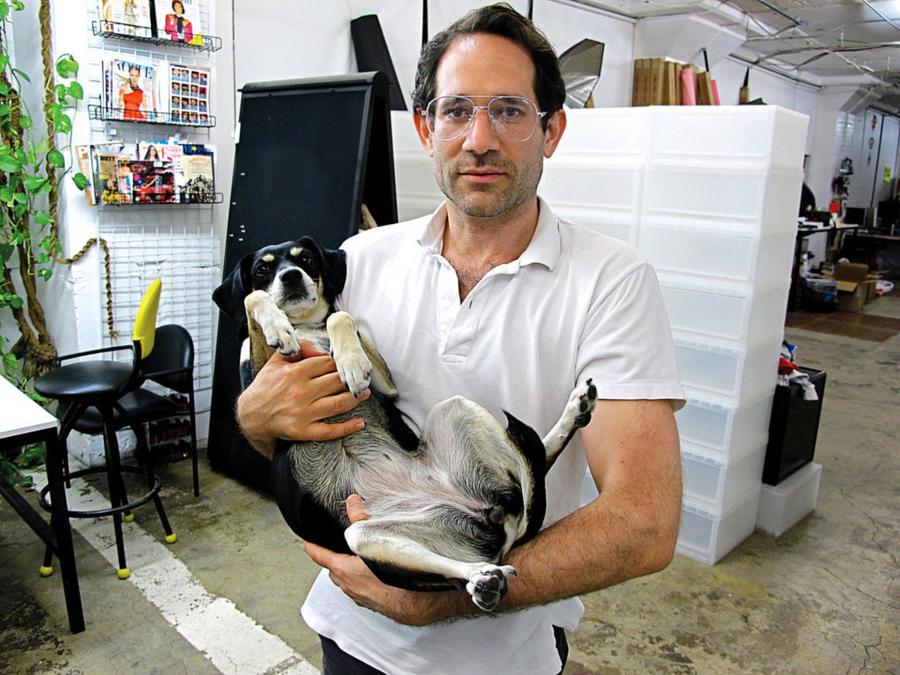There was a time in the early to mid-2000s when Dov Charney was sitting on top of the world. The company he founded, American Apparel, had managed to do the unthinkable: turn a made-in-USA, sweatshop-free t-shirt company into one of the hottest fashion brands on the planet. His stores were multiplying like Starbucks. His ads were on every billboard. And Wall Street couldn't get enough. American Apparel went public in 2007. Charney owned 27% of the company. That stake was soon worth over $700 million. He confidently told reporters he was on track to become Los Angeles's newest billionaire.
But behind the scenes, the man who had built his company on ethics and authenticity was fighting off a very different reputation. Stories of workplace chaos, sexual harassment lawsuits, and erratic behavior began to emerge. Former employees accused Charney of everything from walking around the office in his underwear to openly masturbating during interviews. He denied the allegations, but the damage was done.
Within a few years, he was fired, nearly broke, and eventually staring down a personal bankruptcy filing. It's one of the most spectacular self-implosions in modern retail history. So what happened?
![]()
American Apparel founder Dov Charney. (Photo by Steve Eichner/WWD/Penske Media via Getty Images)
The Rise of an Unlikely Fashion Mogul
Dov Charney was not your typical CEO. Born in Montreal in 1969 to an architect father and artist mother, Charney grew up surrounded by creative energy and ambition. His step-sister, Shira Lazar, would later become a moderately notable tech journalist.
He dropped out of Tufts University in the early '90s to pursue a niche passion: t-shirts. What began as a small wholesale business run out of South Carolina eventually moved to Los Angeles, where Charney immersed himself in the city's garment district and laid the foundation for what would become American Apparel.
His early vision was radical for the fashion world: manufacture everything in the United States, pay workers fair wages, and embrace simplicity over fast-changing trends. But Charney wasn't just selling basics—he was building a brand around a lifestyle. When the first American Apparel retail store opened in Echo Park in 2003, it didn't look like anything else in the mall. There were no logos. The lighting was harsh. The clothes were tight, unisex, and unapologetically plain. But they were everywhere. And they were cool.
By 2005, the company was pulling in over $250 million in annual revenue and expanding at breakneck speed. The company's downtown L.A. factory employed thousands and churned out over a million garments a week. Charney paid workers well above the industry average and took pride in being sweatshop-free. He positioned himself as a new kind of capitalist—one who cared about workers, who ran his company on values, and who wasn't afraid to break rules.
The IPO
In December 2007, American Apparel went public through a reverse merger with a SPAC called Endeavor Acquisition Corp. It was an unconventional move that perfectly fit Charney's unorthodox style. Overnight, American Apparel became a publicly traded company, and Dov Charney became—at least on paper—an extraordinarily wealthy man.
At the time of the IPO, Charney owned 47.2 million shares, representing a 27% stake in the company. On the first day of trading, those shares were worth around $450 million. But that was just the beginning. Within a few months, investor enthusiasm sent the stock soaring. By mid-December 2007, shares of American Apparel hit an all-time high of $15.50, pushing the company's market cap to approximately $2.7 billion.
At that price, Charney's stake was worth a staggering $730 million. He had turned a dorm-room t-shirt hustle into a billion-dollar fashion empire. The Los Angeles Business Journal quoted him saying he was "going to be one of the billionaires in Los Angeles one day."
For a brief moment, that didn't seem far-fetched. American Apparel was everywhere—at its peak, the company had over 280 stores in 20 countries, employed thousands, and had become synonymous with edgy, ethically made basics.
Shockingly, or perhaps because he truly believed in his company that much, Charney never sold a share. Not a single significant block of stock. He believed the best was yet to come. He believed he was the brand. And that belief—rooted in ego, idealism, or some volatile mix of both—would ultimately be his downfall.
The Cracks Begin to Show
Even as American Apparel's stock soared, the company's foundation was already beginning to wobble. Behind the scenes, Charney was running an empire that, according to former employees, operated more like a chaotic art project than a public company. Lawsuits began piling up. Allegations of sexual harassment, discrimination, and hostile workplace behavior became recurring headlines. One former employee alleged she was held as a "sex slave." A Jane magazine reporter claimed Charney masturbated during their interview. Another lawsuit accused him of openly snorting cocaine in the office. He denied many of the accusations, and several cases were dismissed or settled privately, but the narrative was set.
In response to mounting legal costs and public scrutiny, the company began requiring employees to sign acknowledgments that they were entering a "sexually charged" work environment. That only further fueled the fire. Investors grew nervous. Meanwhile, a 2009 immigration audit forced the company to lay off more than 1,500 factory workers—many of them undocumented. The loss of its experienced workforce led to production delays that crippled inventory and order fulfillment.
In 2013, the company made a $15 million bet on a new automated distribution center in La Mirada, California. It was supposed to modernize operations and save millions. Instead, it became a logistical nightmare. Orders were lost. Customer service collapsed. Charney, in a performative show of commitment, moved into the warehouse with a hot plate and a mattress. Rather than being seen as heroic, the stunt was perceived by board members as a sign that he was losing control of the business and himself.
By mid-2014, American Apparel's stock had cratered to under $1. Charney's $730 million stake was now worth less than $20 million. And the board had seen enough.
The Board Revolt
On June 18, 2014, Dov Charney was called into a meeting with American Apparel's board of directors. They delivered a blunt ultimatum: resign voluntarily and walk away with a multi-million dollar severance package and a four-year consulting deal, or be fired for cause. The board cited a long list of allegations, including misuse of corporate funds, violations of sexual harassment policies, and behavior that exposed the company to ongoing legal risk. Charney refused to go quietly.
The following day, he was suspended from the company he founded. Security guards were posted at the downtown L.A. headquarters to prevent him from entering. Keycards were deactivated. Surveillance cameras were installed. He was still legally CEO during a 30-day waiting period, but his days were numbered. In December 2014, the termination was made official.
Charney didn't give up. In a desperate attempt to regain control, he made a deal with hedge fund Standard General, which had been quietly acquiring American Apparel shares. Charney handed over control of his 47.2 million shares—essentially giving them the keys to his remaining power—in exchange for a $20 million loan to help him mount a proxy battle against the board. But the plan backfired spectacularly. Standard General used their leverage to install new board members who had no intention of reinstating Charney. His fate was sealed.
He responded with a flurry of lawsuits. He sued American Apparel for defamation, filed complaints against Standard General, and accused board members of conspiring to push him out. But the legal salvos went nowhere. His defamation case was tossed. His buyback bid was rejected. And by late 2015, American Apparel filed for bankruptcy, wiping out what little remained of his ownership.
Charney had once claimed he'd be a billionaire. Now, he was broke, representing himself in court, and sleeping on a friend's couch on the Lower East Side.
Reinvention, Bankruptcy, and a Netflix Reckoning
After losing American Apparel, Charney didn't disappear—he regrouped. In 2016, he launched a new venture: Los Angeles Apparel, a wholesale basics brand built in the image of its predecessor. The pitch was familiar: ethically made, sweatshop-free clothing manufactured in a vertically integrated factory in South Central L.A. Many of his former employees returned. So did the aesthetic—unbranded t-shirts, lo-fi photography, provocative ad campaigns, and Charney's unmistakable creative fingerprints.
For a while, it looked like the comeback might stick. By 2017, the factory had more than 350 workers. Kanye West's Yeezy brand reportedly sourced blanks from Los Angeles Apparel. During the early days of the COVID-19 pandemic, Charney pivoted to making face masks and medical gowns. But disaster struck again. In June 2020, a coronavirus outbreak at the factory infected over 300 workers and killed four. The Los Angeles Department of Public Health ordered the plant shut down for violating safety protocols.
Two years later, in 2022, Charney filed for personal bankruptcy. He reportedly owed up to $50 million—much of it stemming from the failed Standard General proxy battle—and claimed minimal remaining assets. Even his new side project, Arya's Vintage Closet, filed for bankruptcy protection. For the man who once ran a $2.7 billion fashion empire, it was a staggering fall.
Yet somehow, Charney is still standing. Los Angeles Apparel continues to operate, and in 2025, he announced plans to open a new retail store in New York City. He's publicly distanced himself from Kanye West after West's antisemitic statements, but hasn't entirely faded from the culture he helped shape.
Today, Netflix released "Trainwreck: The Cult of American Apparel," a documentary chronicling the brand's meteoric rise, scandal-filled downfall, and Charney's complicated legacy. The film doesn't just examine the company—it reexamines the man behind it: a self-described "Yiddish hustler" whose empire was built on idealism, disruption, sex appeal, and chaos. Whether Charney was a visionary or a cautionary tale depends on who you ask. But one thing's undeniable: he changed fashion. And then, he lost everything.
Read more: In 2007, American Apparel Founder Dov Charney Was Worth $700 Million. Then It All Came Crashing Down.








